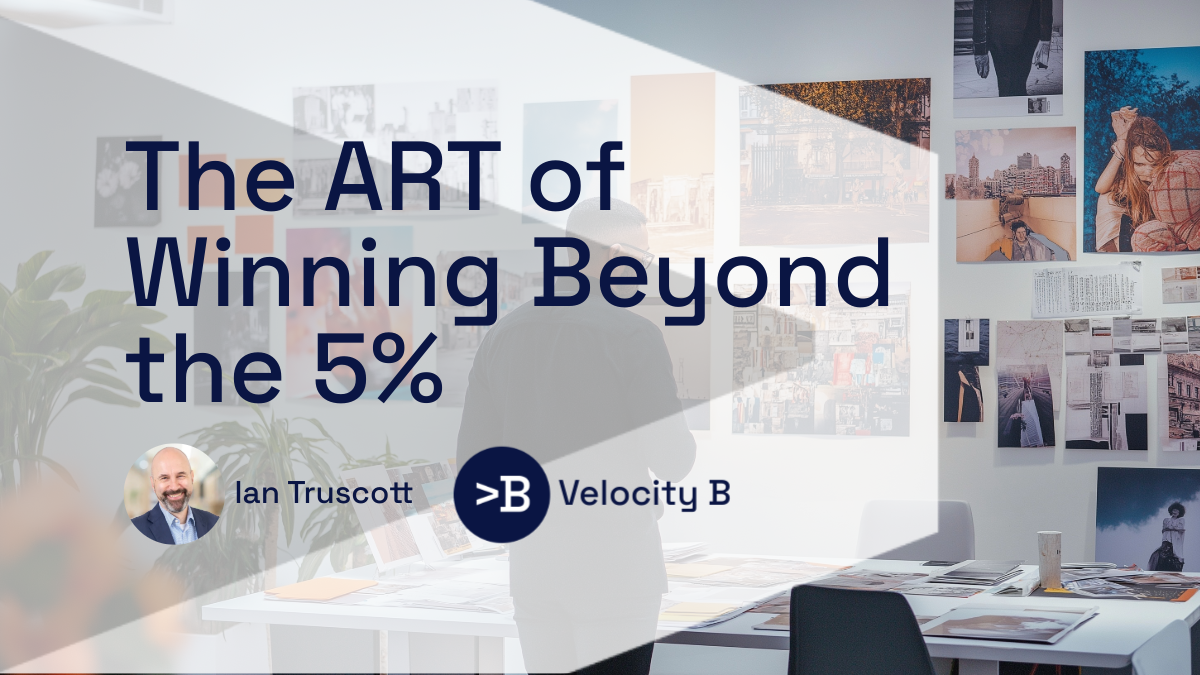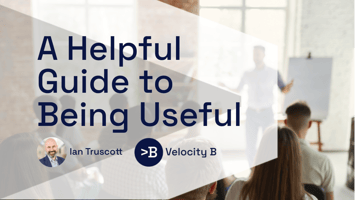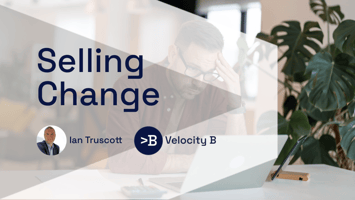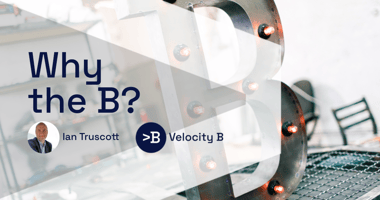How do you ensure that your content cuts through? Ian shares some useful ideas.

The odds that your ideal buyer is in market are very slim, Ian shares how you can still win.
You know that feeling when you fling a message out — an email, a LinkedIn post, a campaign, and... nothing? Crickets.
It’s not that you lack ideas or grit. It’s that in B2B, most of your audience isn’t even listening, as only 5% of buyers are actively engaged in the market at any given point and looking to solve their problem.
The 95–5 rule
That’s not my opinion; it’s from a landmark LinkedIn B2B Institute study, conducted in collaboration with the Ehrenberg-Bass Institute, which analyzed thousands of B2B buying cycles and concluded that the remaining 95% are not ready to buy today, but will be in the future.
- The 5% are in buying mode. Active buyers who have identified a problem, are evaluating solutions, and are open to contacting vendors.
- The 95% are not. They’re the “later buyers”, busy, cautious, or not yet convinced or aware of the problem or solution.
Of course, the precise ratio of active buyers to later buyers varies across different categories, but the research indicates that the overwhelming majority of the potential market is comprised of “later buyers”.
The Long and Short of it
Most sellers (and your competitors) will have a short-term focus on lead generation in the 5%.
To expand on that and look to grow the pipeline beyond that 5% they address the broader audience in the same way as the “buy now” crowd, with an assumption that you just have to find more of that 5%, with lead generation, dropping more ads, running more mid-funnel campaigns, and scale will follow.
However, that’s a brutal treadmill, because anyone outside the 5% of active buyers is not interested in this content, as they are not in the market, don’t feel the pain, lack intent, and thus this messaging is not relevant to them.
Suppose you can play a longer game and influence the 95%, focusing on being useful and educating them about the problem? In that case, there is an opportunity to create demand and preference when they do enter the market.
Storytelling and Brand Matter
If you only market to the 5%, you’re leaving the other 95% of the market unclaimed, handing attention, mental real estate, and potential brand awareness to a competitor.
This isn’t fluffy marketing theory. In their book “The Long and the Short of It: Balancing Short and Long-Term Marketing Strategies”, Les Binet and Peter Field, the godfathers of effectiveness marketing, shared research that long-term brand building is responsible for around 60% of overall growth, compared to 40% from short-term activation.
In other words, brand isn’t the opposite of demand; it creates it. And yet, founders often balk: “Why spend on brand when I need pipeline now?”
Because brand is future pipeline.
Getting the Right Balance with ART
Not an easy conversation, as, of course, if you are a high-growth business or a startup, future pipeline is all very well, but it’s not great for cash flow or a nervous investor.
Balance across these marketing activities is essential, as industry benchmarks (including from Binet and Field) suggest that for most B2B scaleups, a 60:40 split between brand and demand maximises ROI over time.
Therefore, I have developed a mantra over the years that the goal of marketing is to create ART (Awareness, Revenue & Trust) to ensure that we maintain a balance between the long-term brand investment and the short-term revenue-generating activities and metrics.
Awareness
For the 95% of the market, the “later buyers”, we need to focus on awareness activities that are centered on the customer and their problem, rather than our solution, features, or functions.
The tactics employed here are primarily content marketing, including thought leadership, long-form content, peer stories, free insights, research reports, and classic brand campaigns such as paid sponsorships of events or activations that the 95% are likely to see.
We measure the effectiveness of that with brand recall, share of search, engagement, shares, branded search volume, and direct traffic.
Revenue
This is primarily focused on the 5% and the “hand raisers” who have identified themselves as ready to buy.
The tactics employed here are often referred to as performance marketing, demand generation, or lead generation (although I believe that demand generation occurs a little earlier, so this is essentially lead generation at this point). These tactics include paid search (as this requires intent, specifically a buyer looking to solve their problem), demo offers, outbound business development, free trials, and pilots.
The ultimate measurement here is revenue, but also includes contributions to the pipeline, sales accepted leads, and operational revenue metrics, such as the cost of customer acquisition.
Trust
These are the campaigns and content that span all buyer stages, building brand trust - essentially, demonstrating that your product or service will do what it promises without embarrassing the buyer if they recommend it.
The tactics here include the classic success stories and case studies that position your solution as credible, as well as industry research that underlines your approach and point of view can be trusted, demonstrating that you understand the buyer's pain and the trends affecting them.
ART’s Compound Reward
McKinsey’s research into B2B growth shows that companies that invest steadily in brand outperform peers by up to 2x in revenue growth over five years. Conversely, if you ignore them, you end up in blitz-mode: ever more frantic, ever more discounting, ever more competition. That’s a race to the bottom.
Brand awareness and trust are a marketing multiplier, removing friction from revenue and creating buyers who are already primed for your solution, resulting in greater sales velocity.
Create ART, win over the 95% today, and they’ll become part of your 5% tomorrow.

Managing Partner - With a background in tech and product development, Ian is an experienced marketing leader, CMO, writer, and trusted advisor.
You can follow Ian Truscott on LinkedIn





